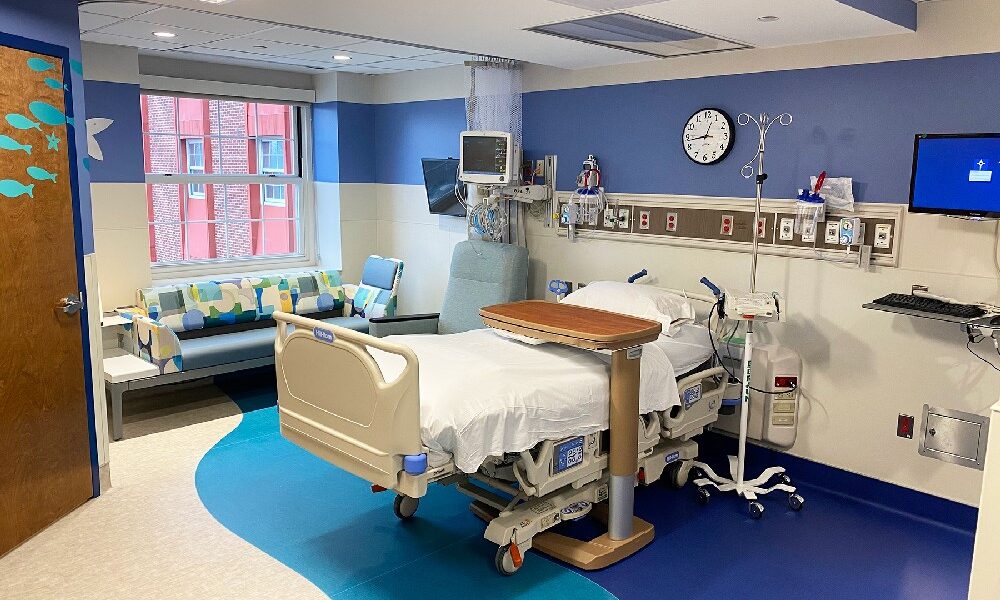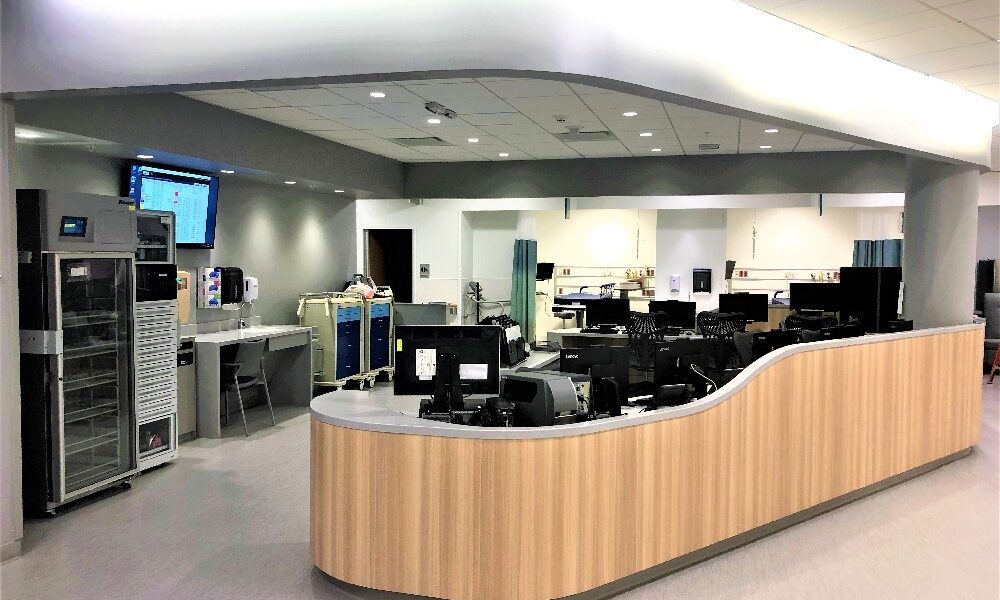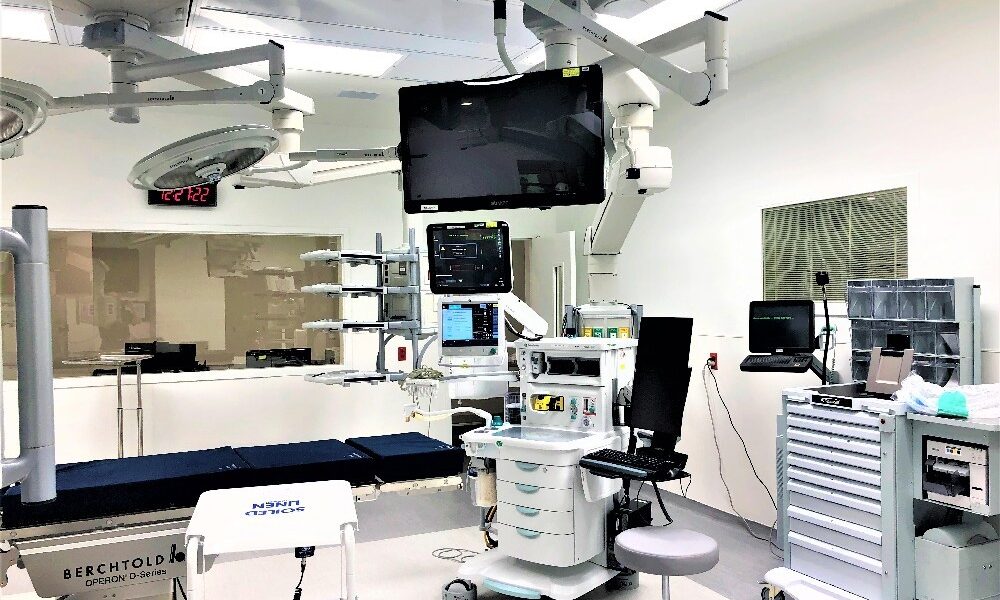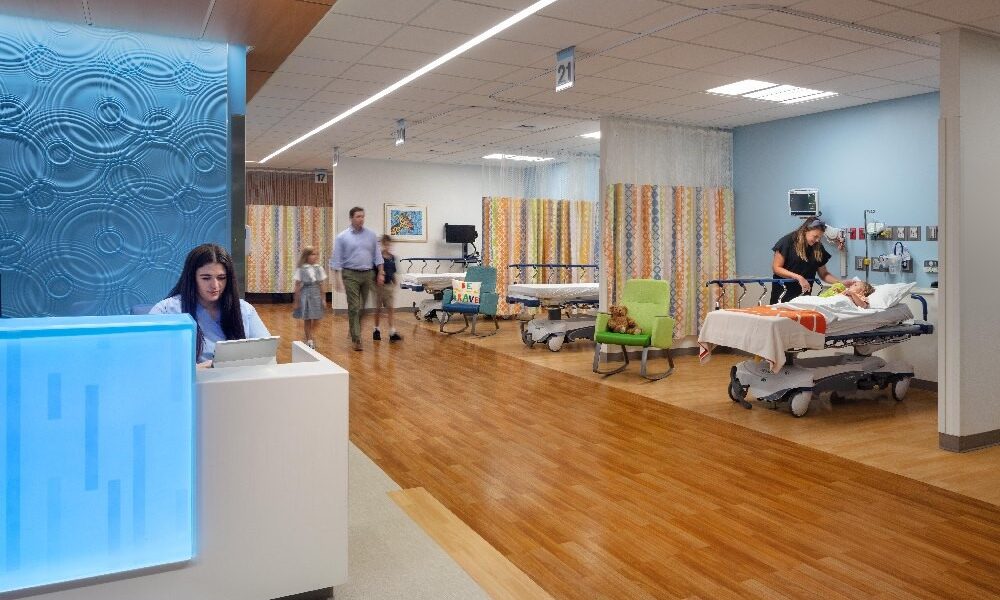 A clinical or patient-centered approach, rather than a functional approach, can shape the technology around the people that organizations are trying to serve. Image: EYP Architecture
A clinical or patient-centered approach, rather than a functional approach, can shape the technology around the people that organizations are trying to serve. Image: EYP Architecture  Organizations should consider how a full-scale technology package can serve the target customer optimally. Image: TLC Engineering Solutions
Organizations should consider how a full-scale technology package can serve the target customer optimally. Image: TLC Engineering Solutions  Instead of focusing on each technology as an individual system, organizations should focus on a use-case that the technology is meant to enable. Image Steven Wolfe Photography
Instead of focusing on each technology as an individual system, organizations should focus on a use-case that the technology is meant to enable. Image Steven Wolfe Photography  Small pilot programs and proofs of concept are great tools for testing an integrated technology strategy before scaling up to a full facility integration. Image: TLC Engineering Solutions
Small pilot programs and proofs of concept are great tools for testing an integrated technology strategy before scaling up to a full facility integration. Image: TLC Engineering Solutions Subscribe Now
Building Better Technology Infrastructure
By Taw North
Targeting customers with proof of concept, strategic integrations
As much talk as there is in the healthcare industry about building automation and technology integration, many times the conversations about how systems are going to work together are missing.
Sometimes leaders just want the latest technology, but don’t really know how it will be used because they didn’t include decision makers who understand the target users. It surprises many organizations to learn that a key stakeholder in mapping technology strategies can actually be marketing staff, who are seasoned in using customer personas to map strategies that engage target audiences. Marketing sees technology through the customer’s eyes and can bring a usability lens to strategy discussions. Cyber security is also a key component of the strategy discussion that is often overlooked. As smart buildings integrate more technology used in everyday operations, like the mechanical and electrical system, protecting that technology from cyber attacks becomes just as important as protecting customer data and records. Knowing how to implement security controls and the impact on systems is a key component to mapping long-term strategies.
Proving the concept
In the big picture, smart buildings are collecting a lot of data, which is used to achieve goals and benchmarks. However, understanding how that data is processed and what actions the organization should take as a result of that data can require more than a stakeholder discussion and whiteboard illustration. Small pilot programs and proofs of concept are great tools for testing an integrated technology strategy before scaling up to a full facility integration.
For example, in patient care settings, patient monitoring systems, smart bed sensors and medical equipment notifications can alert care staff to potential problems with a patient, but who is alerted? In situations where census numbers have stretched staffing resources, what is the chain of care through which these alerts are routed? Alarm fatigue is a real issue. Determining these protocols in advance is critical to successful implementation and gaps can be discovered during a pilot program or proof of concept that tests new integrations in a small sample to perfect them before organization-wide implementation. Similarly, pilot programs with building automation systems, security systems, occupancy and air quality sensors can provide staff an optimal working environment and identify issues with equipment before it breaks.
Implementing an integrated technology solution in a large facility project takes significant resources. By doing a proof of concept first and testing the solution in a smaller area, organizations can finetune a solution before scaling it across an entire facility. Once the systems are talking to each other, it’s easier to scale the technology up to the entire building, conserving many of those resources needed to implement technology across the organization.
A project that exemplifies these concepts is a recent seven-story patient tower for a South Florida hospital’s main campus. Through the visioning process, the project team determined they would need integrated technology between a clinical smartphone, the nurse call system, the medical devices (IV pumps, ventilators) and the electronic medical record system.
The project team and stakeholders set up a pilot program on a floor of the existing medical facility to test the technologies and integration. They brought in all vendors early in the design phase of the project lifecycle and started working through the integrations, verifying that all of the systems could communicate and that the interconnectedness posed no security issues. At that point, the project team collaborated with users to understand what information needed to be transferred between systems. This process became iterative with a series of mock-up/trial runs until hospital leaders and the project team achieved seamless integration of the right combination of messaging — so that when a user saw a message on their phone, it was in clinical language and they could understand the context of the patient condition.
This testing was done ahead of and during construction of the tower so that, by the time it was rolled out on a large scale, all the back-end custom integration was complete and it was a matter of scaling at that point. Healthcare leaders viewed this a success compared to the typical project where the vendors aren’t called in until the end of construction when the focus is on opening and activating the new building and the technology integration tends to become lost amidst other competing priorities.
The most difficult challenge with this successful implementation was gathering all the correct technical stakeholders: from the vendor, owner and clinical sides all together in a collaborative environment. The cyber security was an anticipated risk but having a very strong cyber security team was significant.
The unification of this diverse team could not have been possible without strong support from executive leadership. They saw the value in this early integration and provided the funding and resources to realize the project, which led to huge benefits through the lifecycle of iterations and execution.
Technology is strategy
As buildings become smarter, organizations face the challenge of being more strategic with their technology investments. It requires a shift in mindset to see technology as an enabler, not an end-product. You can see this shift happening in healthcare, where smart patient rooms are producing information about the patient that is then sent to the care staff. Rather than having to ask for the information or seek it out when patient vitals start to decline, this critical information is transmitted to staff directly, which accelerates the response and reduces staffing stress.
By looking at technology integration through a larger strategic lens, organizations can create an actual roadmap that can help them see longer-term, overcoming that seven-year horizon many find difficult to see past:
- Establish the goal. On day one of the project, define the goals by identifying the use cases.
- Be future-focused. Look at future uses to plan for technology that may not be available today.
- Plan for upgrades. Determine how to upgrade or enhance the current systems.
- Identify soft costs. Think of capital costs versus operational costs. How often will systems need upgrading or components need replacing? What is the appropriate staff to maintain the system? Organizations need to build in these soft costs to map a realistic technology solution.
- Avoid gaps/overlaps. Use a responsibility matrix to determine what is in the owner’s budget and the construction budget to identify any gaps or overlaps and avoid unanticipated costs.
- Build in contingencies. Contingencies help cover changes in technology.
A key strategic planning tool is benchmarking. There were benchmarking exercises that examined technology implementation in a variety of other health systems, some similar to the smaller, three-hospital community system in this example, and others very large, up to 10 times that size. The executives and project team were exposed to examples of varying scope and then determined a plan that would provide the most value for this particular system. These technologies are cost-intensive so it’s important to choose applications that are most suitable to the operations of the system.
For example, one system they surveyed leaned heavily on telehealth technology to connect remote experts to patients in remote locations in Western states, where they might be a six-to-seven hours drive away from a specialist. For this system in Florida, that was not as critical since the state is more densely populated and most people can travel to a specialist in 90 minutes or less. In this case, the team decided that, while some telehealth was definitely a welcome offering, they did not have the clinical use case to support it on the level of the facilities in Western states. Instead, they focused those resources on technology in the patient room to enhance patient care and efficiency for providers, which was a higher priority in this system.
There were similar discussions around locating technologies that enable tracking of equipment, assets, staff and patients. Having that infrastructure in place would be key to improving efficiency amidst staffing shortages as it would allow them to collect data on where equipment is, how long it takes for nurses to arrive when called and how staff is utilized in the ED, for instance. Analysis of that data would help with staffing models to determine where the bottlenecks are and which areas need investment; e.g., do they need to hire more staff or build more exam rooms? The same questions are asked about which choices would add the most value in the context of this facility.
Technology moves so fast it is no longer feasible to say “most-advanced.” Rather than thinking of what is best for a specific function, though, organizations should consider how a full-scale technology package can serve the target customer optimally. Shifting this focus, organizations can plan more effectively for solutions that are feasible and manageable. Most importantly, they can implement solutions that are effective for the entire organization, showcasing buildings that are smart for all stakeholders and users.
Author: Taw North
Taw North, RCDD, LEED AP, is principal | regional director with TLC Engineering Solutions.
Tags: Benchmarking, Technology
Posted April 17, 2023
More Articles:
- 3 Steps to Stay Ahead of the Competition
- Nimon to Oversee Equipment, Technology Planning Integration at Healthcare Building Solutions
- Guerin Children’s Inpatient Pediatric Unit at Cedars-Sinai Provides Interactive, Family Friendly Healing Environment
- McLaren Northern Michigan Wins Award for Integration of Patient-Care Technologies
- CxA Workshop & Exam
Apr 29, 2024 – Apr 30, 2024 - EMP Seminar & Exam at CxEnergy 2024
Apr 29, 2024 – Apr 30, 2024 - CxEnergy
Apr 29, 2024 – May 2, 2024 - PHCC West 2024
Apr 29, 2024 – May 2, 2024 - Lean in Design Forum 2024
May 1, 2024 – May 2, 2024 - IFMA’s Facility Fusion Conference & Expo
May 5, 2024 – May 7, 2024 - ASHE Academy 2024
May 6, 2024 – May 10, 2024










